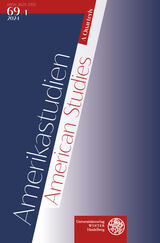Autor: Stefanie Schäfer
- «
- 1
- »
Die Suche erzielte 3 Treffer.
Phenomenal Woman Beitrag open-access
Michelle Obama’s Embodied Rhetoric and the Cultural Work of Fashion Biographies
“Recognition Is a Form of Agreement” Beitrag open-access
The Workings of Self-Narration in The Catcher in the Rye and Invisible Man
- «
- 1
- »
